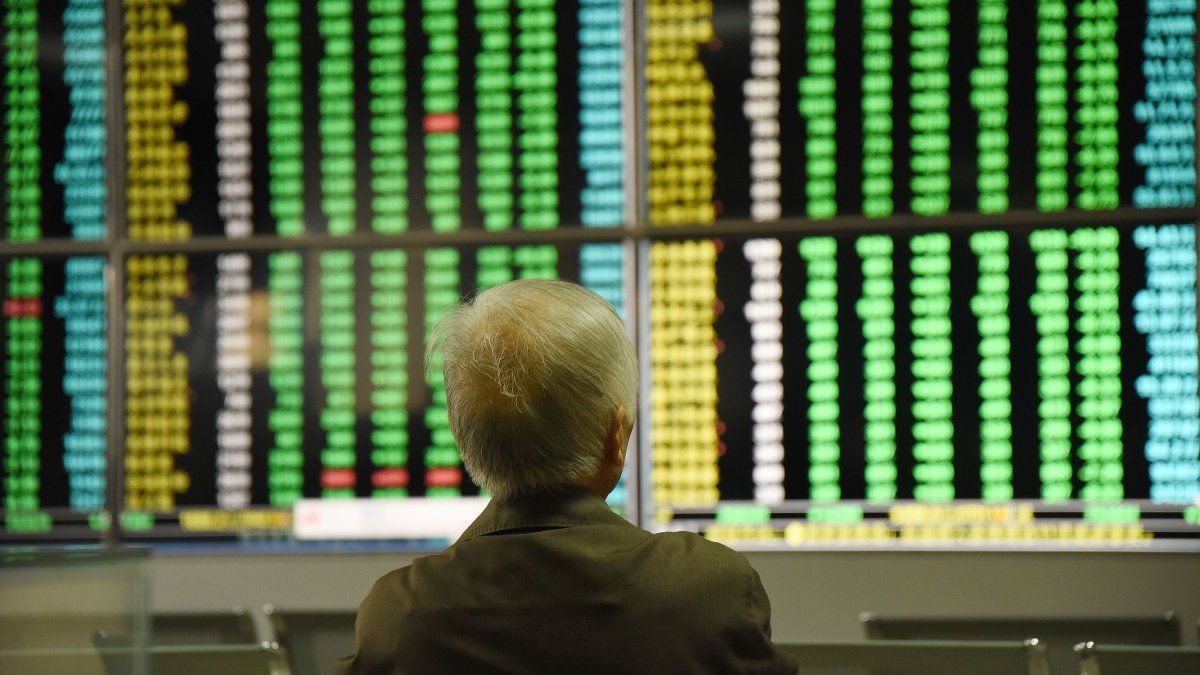This happens while the leading index of Argentine Stock Exchanges and Markets (BYMA) could reach or even surpass the historical record of 2018. It is worth remembering that, during the last rally in Argentine stocks under the presidency of Mauricio Macrihe S&P Merval It reached a peak of US$1,800, which represented an increase of +155% since the beginning of his mandate. However, if this maximum is adjusted for today’s updated US inflation, reaches US$2,200, which suggests that there is a growth potential of 12% to reach that historical record.
And within the Oil & Gas sector, there are the results of YPF (YPF) that the strategist points out that “were highlighted“and served as an important catalyst for the current rally, which propelled the state oil company’s stock above the US$40.
Also highlighted Southern Gas Carrier (TGS), which reported an excellent quarter, particularly in the natural gas transportation. “This business was once again the main driver of the company, with 49% of total sales, a significant increase compared to the 20% it presented in the same quarter of the previous year,” analyzes Sniechowski..
On the other hand, the balance of Pampa Energy (PAMP) “was also very favorable.” The analyst highlights that the best of this firm is yet to come, in particular, “with its strong commitment to developing the project Aranda Cornerwhich will allow it to position itself as a relevant player in the ‘shale-oil’ market, an area in which it currently does not have a significant presence, since Pampa is almost completely a gas producer,” he analyzes.
Regulated companies
In the regulated sector, Sniechowski explains that the rate increases had a clear impact on the numbers of all companies. In particular, The balance sheets of the gas distributors were attractive: Metrogas SA (METR), Distribuidora Gas Cuyana (DGCU2) and Distribuidora Gas del Centro (DGCE) among others.
Also gas transporters, such as Northern Gas Carrier (TGNO4) and Southern Gas Carrier (TGSU2), showed “impressive results.” Sniechowski indicates that the transportation of electricity by companies such as Transener (TRAN) also showed positive balances ““hand in hand with rate increases, the same as the distribution of electricity for companies like Edenor (EDN)”.
IEB.png
At the electricity generation level, it stands out Central Port (CEPU), which “showed a very good balance, despite the fact that the tariff still does not cover the monomic cost. I believe that 2025 will be the year of the generators and, in that sense, both CEPU and PAMP are good vehicles for have positions in the sector,” says the strategist.
The materials sector: one of the most analyzed by the market
It turns out that sustained growth in key sectors, like construction, It could reflect an improvement in production, employment and investment in the economy, which is an indication of economic recovery at a general level. According to an equity report Adcap Financial Groupthis type of recovery could translate into opportunities for those sectors directly linked to economic activity, with a growth in demand that would benefit companies linked to construction and industry in general.
Sniechowski indicates that the balance sheets presented by companies in this sector “they didn’t surprise him“And it is that the construction activity”It is still far from reaching 2023 levels and, given the collapse of public works, it is doubtful that it will do so again in the short term.“, he assures. This was reflected in the balance sheets of Loma Negra (LOMA) and Ternium (TXAR). Aluar (ALUA), for its part, showed good numbers (83% of sales abroad) “but there is concern going forward how the cost of alumina skyrocketed, which, together with electrical energy, are the main production costs,” says the analyst.
And he adds that “a ton of aluminum remained quite stable, around US$2,500, but the price of alumina skyrocketed (especially in the last month of the year), which leads us to think that in the Next quarter we will see margin compression,” he concludes.
The banking sector: another that the city analyzes with a magnifying glass
Although it lacks Macro Bank (BMA) present its balance sheet, a conclusion can now be drawn about the sector. This is reflected in one of the latest market trends. As Adcap indicates, “in recent weeks, prices compressed the ‘fair values’ and we saw flows from the banking sector to the Oil & Gas sector.”
Sniechowski maintains that the banks’ situation “is a scenario that had already been anticipated.” And the trend was marked by the drop in the return on equity (ROE) due to the collapse in interest rates. “They lost the return they used to generate due to their exposure to the public sector and, although the traditional banking business sustains the flow of income, it does so at a much slower pace,” explains the strategist. And he adds that “when comparing the first quarter of 2024 (1Q24) with the third quarter (3Q24), There is a drastic drop in the ROE, which went from more than 30% to levels close to 5%“.
For Sniechowski, this third quarter, “or at most the next one,” should set the floor for banks’ ROE. Why is ROE important? Because it is a key indicator to justify a high price-to-book value (P/BV) multiple, especially when compared to other banks in the region. However, it is crucial to highlight that the Argentine banking sector has enormous growth potential.
“If we base ourselves only on the current situation, with ROEs close to 5% or 6% and P/BV multiples between 1.5x and 2.0x, it might seem that Argentine banks are expensive. However, If we analyze the general picture, with a loan/GDP ratio of only 9% and deposits/GDP of 22% (the lowest in the region), it is evident that the expansion potential is significant,” he explains.
The real estate
Finally, there is “Real Estate”. A segment that the IEB finds very interesting to take advantage of the appreciation in the square meter, and the return on mortgage credit. In that context, “the Irsa ($IRSA) numbers were very positive in that sense and moving forward we really like it as a story,” analyzes Sniechowski.
Having said the above, the strategist recommends that a medium-term fixed income portfolio be formed as follows: 35% in Oil & Gascomposed of YPF, Pampa Energía and Transportadora de Gas del Sur; 35% in financial entities, with Banco Supervielle and BBVA Banco Francés; 20% in regulated companieswhich include Transportadora de Gas del Norte, Metrogas and Central Puerto; 5% in IRSA Commercial Properties; and 5% in Loma Negra.
For their part, Adcap maintains that there are opportunities in the Oil & Gas sector, since the economic recovery is supported by the primary sectors, and they consider that investors can benefit from its growth and also from the reduction of country risk.
Although they point out that “With a relative value approach, they prefer Vista Energy ($VIST) instead of YPF, since they project an “outperformance” of 50% in an adjustment scenario towards fair value.” This means that the broker’s analysts consider that VIST has greater upside potential when considering a price correction or adjustment towards its intrinsic or fair value, that is, the value that would more accurately reflect its fundamentals.
Source: Ambito
David William is a talented author who has made a name for himself in the world of writing. He is a professional author who writes on a wide range of topics, from general interest to opinion news. David is currently working as a writer at 24 hours worlds where he brings his unique perspective and in-depth research to his articles, making them both informative and engaging.




